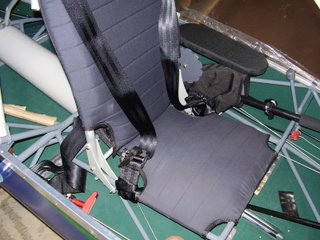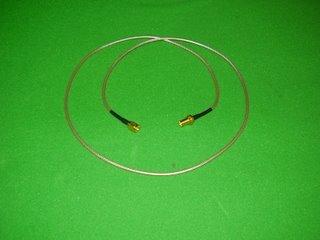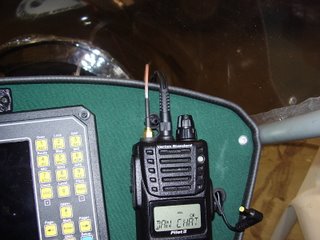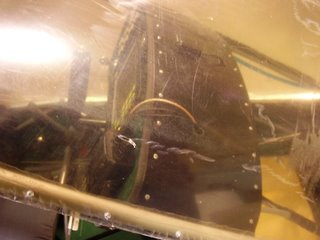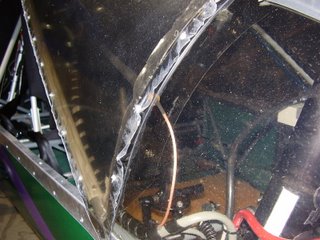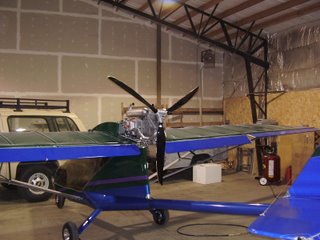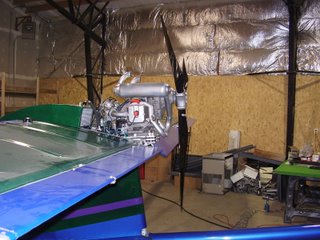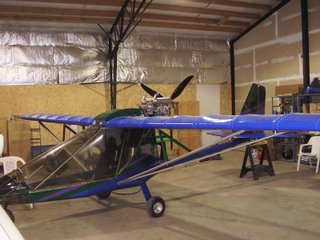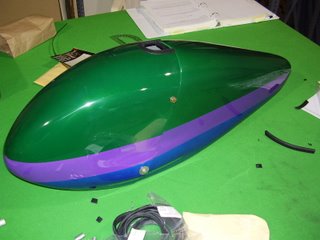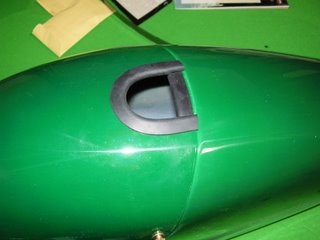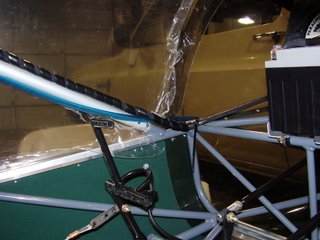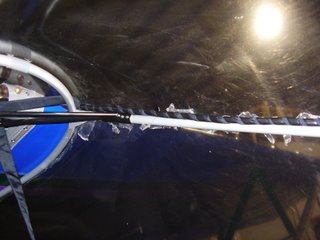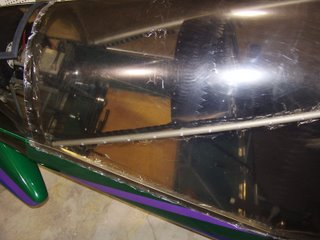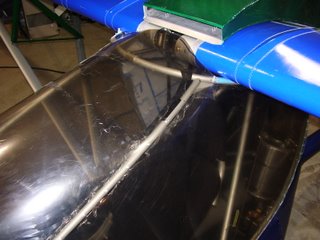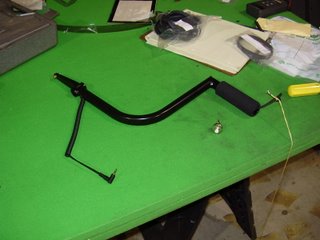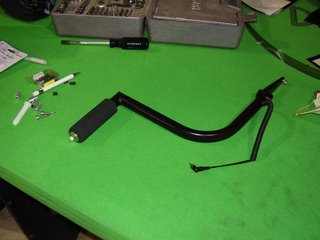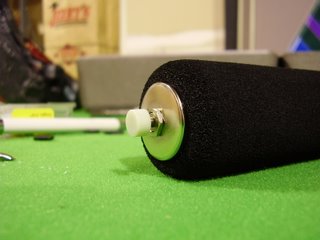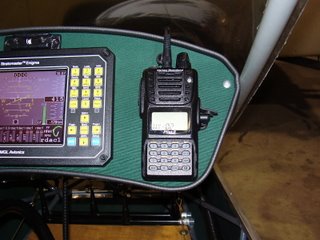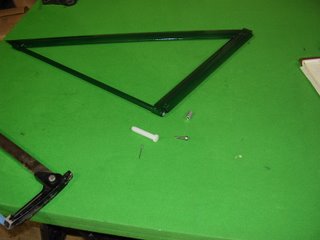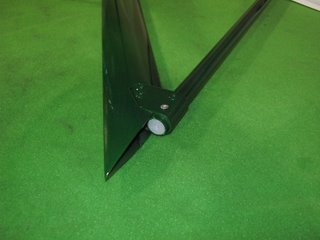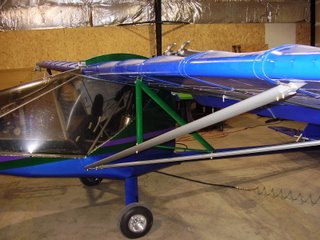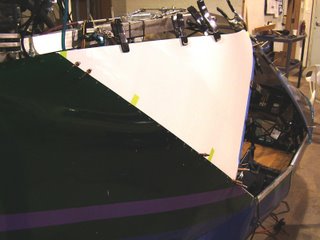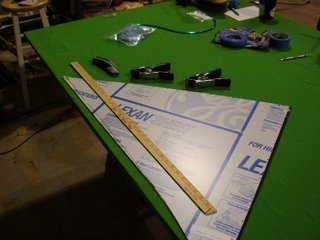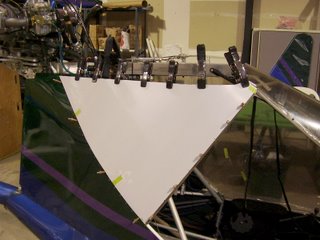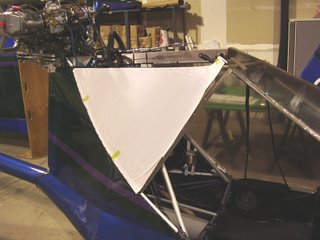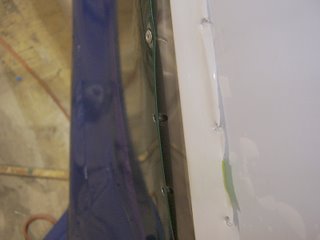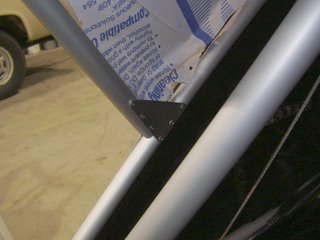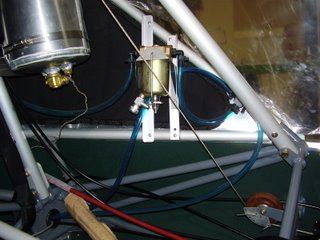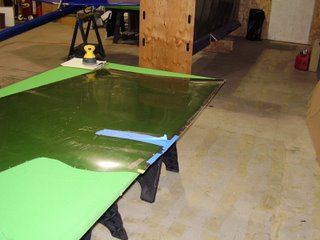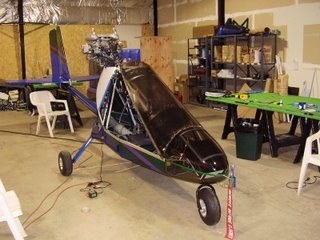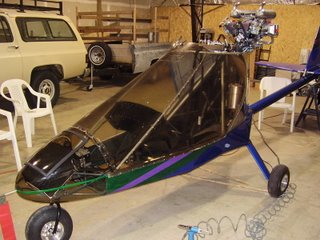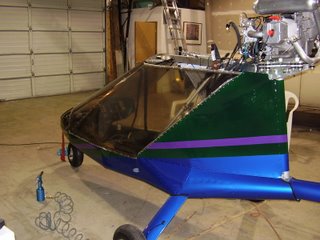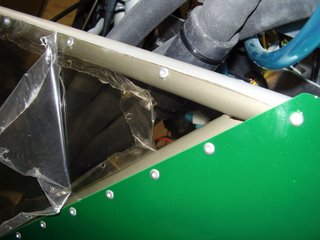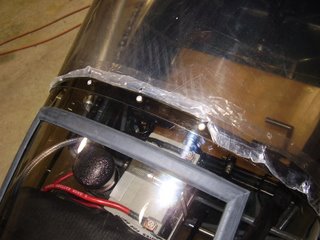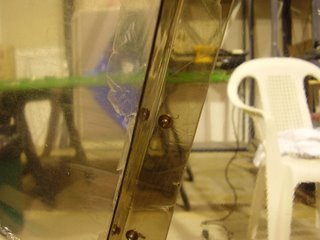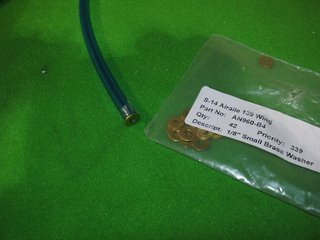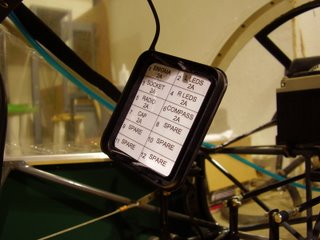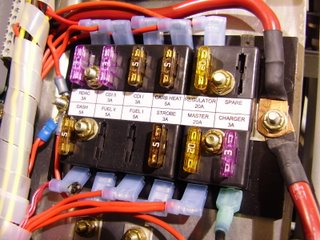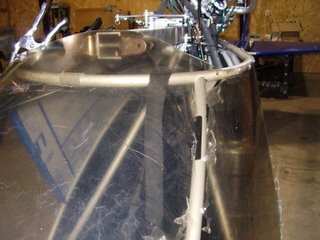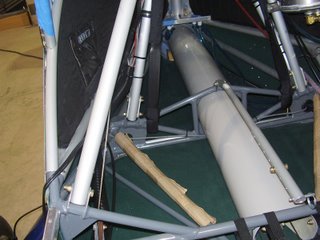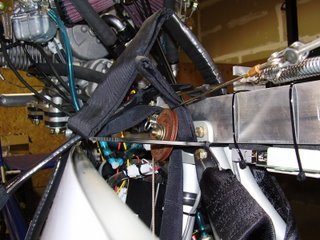The seat belts in the S-14 seam to have been an after thought. The lap belts, which I installed a while ago interfere with the flap mechanism. To alleviate this, I wrapped the left portion of the lap belt through the steal frame of the plane. This effectively shortens the length of the left lap belt but keeps it from rubbing on the flap mechanism.
The shoulder straps, which I installed today, also has issues. The shoulder straps are securely bolted to the keel tube but are only connected to the lap belt on the bottom. The shoulder straps are made with loops at the bottom for lap belt to go through. When the shoulder straps are toughened, the lap belt rides up, taking the grip off of my hips and places it on my stomach. The removal of the pressure on my hips make me feel un-secure and the pressure on my stomach is uncomfortable.
So instead of wrapping the loops of the shoulder straps around the lap belt, I looped them around the framework of the seat. This allows me to securely tighten the lap belt and securely tighten the shoulder straps. The shoulder straps are easy to get in and out of in this position. They may be a little too easy to get out of but they due seems to hold me in place.
